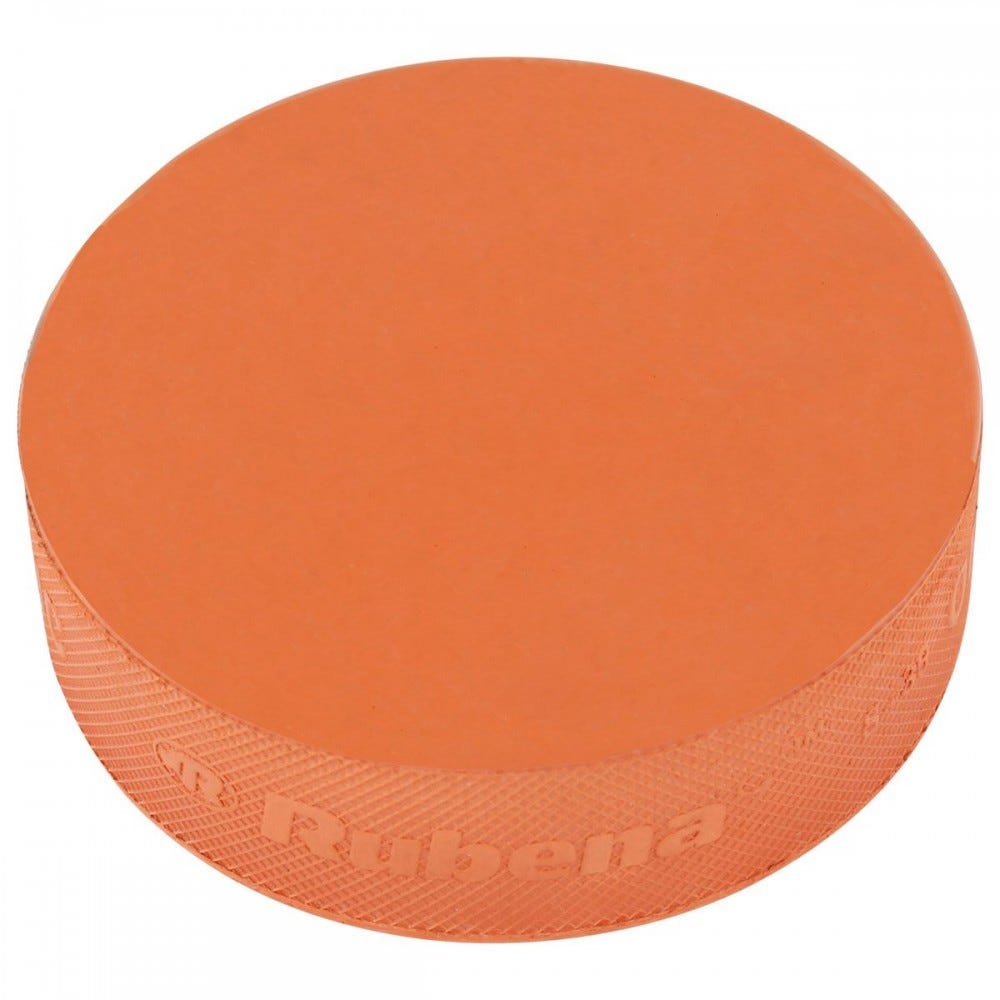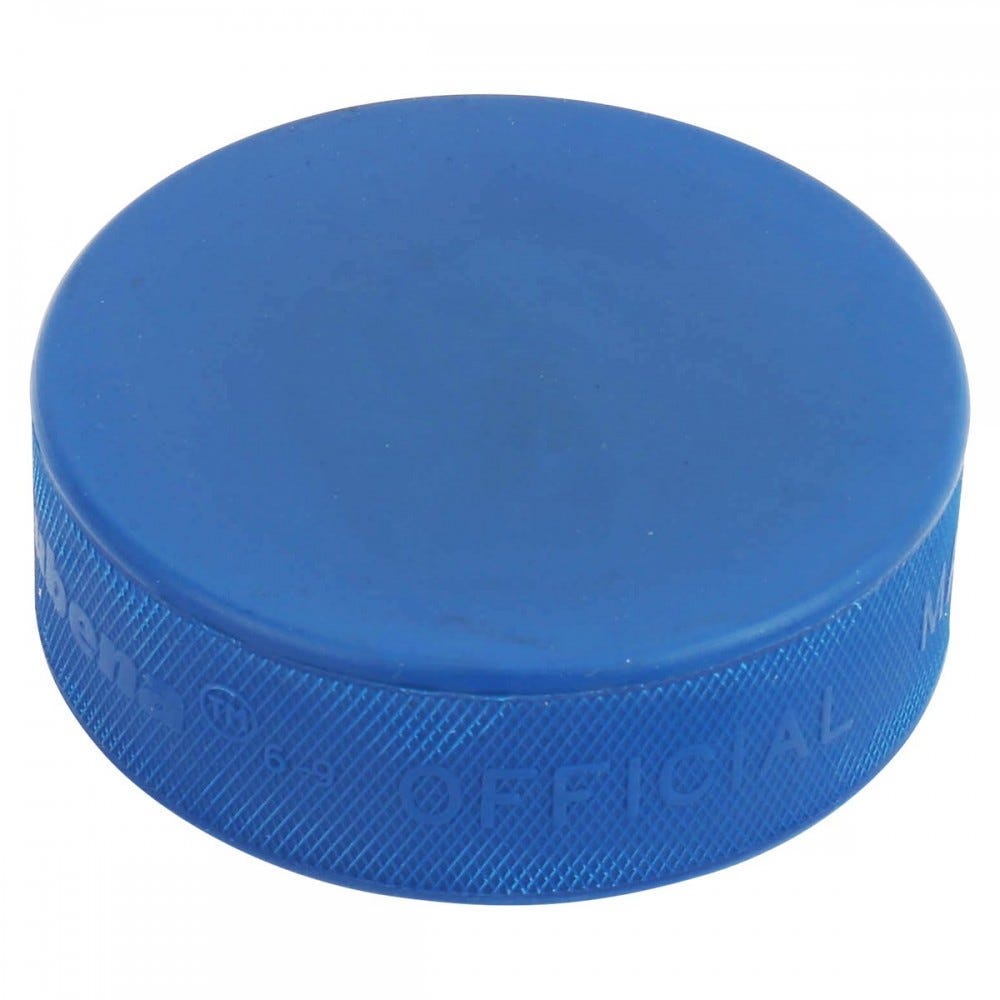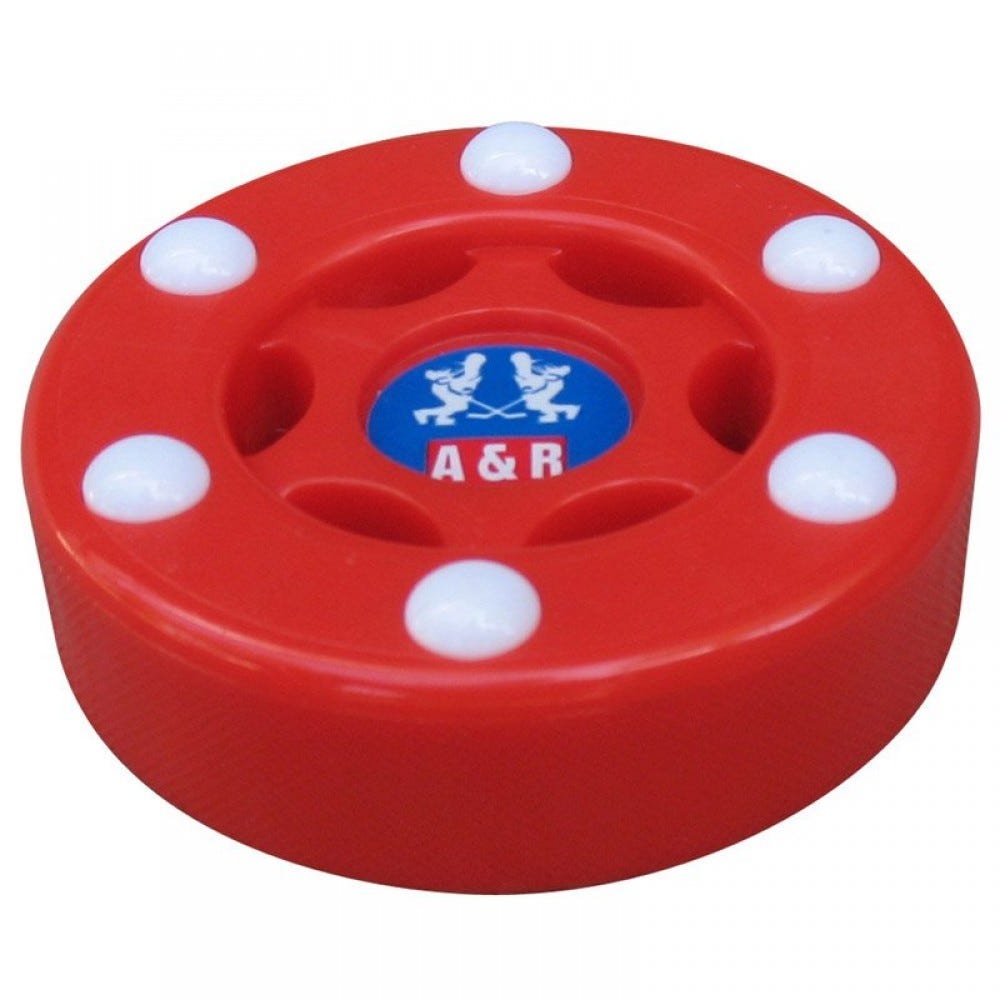Hockey Puck: The Anatomy of Hockey’s Biscuit

Since the beginning of the sports’ history, some form of an ice hockey puck has been used during gameplay. While it has made a few changes over the years, the ice hockey puck has always been an imperative part of the game. Even fans view the game pucks as a one of a kind souvenir if they are able to get their hands on one!
Throughout this article, you can expect to learn the dimensions and weight of a standard hockey puck, their construction process and what they are made of, a brief history of an ice hockey puck, some of the different varieties of hockey pucks, as well as some frequently asked questions. So, without further ado, let’s take a look!
- Hockey Puck Weight
- Hockey Puck Dimensions
- What is a Hockey Puck Made of?
- History of the Hockey Puck
- Common Questions About Hockey Pucks
Hockey Puck Weight
A standard ice hockey puck weighs 6 ounces and is always fully black in color. The mass of a hockey puck remains the same throughout almost all levels of ice hockey, including NHL games and international play, such as the Olympics and the World Championships.
Hockey Puck Dimensions
The dimensions of a standard ice hockey puck are one inch thick and three inches in diameter. Like the weight, how thick an ice hockey puck is also remains the same throughout all levels of ice hockey.
What is a Hockey Puck Made of?
Ice hockey pucks are made of vulcanized rubber with bonding materials. Thanks to the vulcanization process, this material allows for the puck to be hard, durable, and smooth. Most ice hockey pucks feature a team or league logo on them as well. The rubber-based logos are silk-screened onto one of the faces of the pucks.
How are Hockey Pucks Made?
All ice hockey pucks are currently made in just four countries: Canada, Russia, China, and the Czech Republic. While the process of how ice hockey pucks are made has slightly changed over the years, the most current process goes as follows:
- Mixing: Granular rubber and special bonding materials are put into a mixing machine
- Curing: Upon removal from the mixing machine, the molds are placed into big compression molds and placed into a curing press set at 300 degrees
- Forming: From there, the pucks are then cold compressed for 24 hours, allowing them to harden and take shape
Different Types of Hockey Pucks
While the official ice hockey puck is the most well-known, there are actually three different variations of hockey pucks, each of varying sizes, weights, and materials.
 |  |  |
Training Puck | Youth Puck | Street and Inline Puck |
Training Pucks

Training pucks are designed to help players develop their stickhandling skills and shot speed. With this in mind, these pucks are heavier than standard ice hockey pucks, weighing 10 ounces. Additionally, they are typically reddish-orange in color and constructed of hard rubber, much like official ice hockey pucks.
Youth Pucks

Youth ice hockey pucks are designed for young players who are still learning the game of ice hockey and are unable to use standard weight pucks. These youth pucks weigh 4 ounces, are always blue in color, and are composed of a hard rubber material.
Street and Inline Pucks

Inline pucks are made up of a hollow, lightweight plastic material that is almost always seen in a bright, fluorescent color. They generally have plastic ball-bearings within them that enable them to slide on roller hockey courts. Street and Inline pucks also feature unique build designs that help keep fluttering and bouncing to a minimum.
History of the Hockey Puck
In the early years of ice hockey, around the mid-1800’s, lacrosse balls were used! They were cut into thirds and only the middle part of the ball was used. While iterations of ice hockey, such as field hockey, have been around since the 1800’s, the first professional ice hockey league was organized in 1904. Shortly thereafter, in 1917, the National Hockey League was created. Following the creation of the NHL, the game moved past the lacrosse ball idea, and two pieces of flat rubber from tires were glued together and used as the puck. Due to durability issues, this was swapped out for a different design. This design consisted of a puck with sloped edges, but the players were not fond of this, so they went back to using the original two-piece rubber design. It was not until the 1990-1991 season that the NHL had its first “official puck.”
Who Invented the Hockey Puck?
The modern ice hockey puck was created by a Canadian man named Art Ross in 1940. The design is still used throughout the world today.
How Did the Hockey Puck Get its Name?
While the origin is mostly unknown, it is said that the “puck” gets its name from an elf character within one of Shakespeare’s plays titled “A Midsummer’s Night Dream.” Additionally, it is believed that the word is derived from the Scottish Gaelic word “puc” meaning “to poke” or “punch.”
What was the First Hockey Puck Ever Used Made of?
The first ever ice hockey puck was constructed of wood and was originally round in shape. Very shortly thereafter, people began cutting lacrosse balls into thirds and using the mid-section of the ball as the puck.
What’s the fastest hockey puck shot ever recorded?
The fastest ever recorded was by Alexander Riazantsev during the 2012 KHL (Kontinental Hockey League) All-Star Game at a speed of 114.1 miles per hour. Zdeno Chara of the NHL’s Boston Bruins holds the official NHL record of 108.8 miles per hour, shot during the 2012 NHL (National Hockey League) All-Star Game.
Common Questions About Hockey Pucks
Are hockey pucks frozen?
Yes, during games hockey pucks remain frozen in a cooler to help reduce the amount of bouncing on the ice during gameplay.
How fast can a hockey puck go?
While the fastest NHL shot ever recorded was during an All-Star Game at 108.8 miles per hour, shots during regular games average between 80 and 90 miles per hour, with slapshots consistently measuring close to, or over, 100 miles per hour.
What is the official hockey puck of the NHL?
Official NHL Hockey Pucks can be found here.
Are NHL pucks the same size as college and high school pucks?
es, the weights and dimensions are the same between each of these levels of play.
Are hockey pucks different sizes for youth hockey players?
While the dimensions of youth hockey pucks are the same as standard ice hockey pucks, they weigh 4 ounces instead of the standard 6 ounces, giving the younger players a chance to develop their stickhandling and shooting abilities.
What’s the best puck to use for off-ice practice?
Off-Ice Training pucks are meant to replicate the weight and feel of traditional ice hockey pucks. Training pucks can be found here.
Are hockey pucks rubber?
Yes, Ice Hockey Pucks are made mostly of hardened rubber, bonding materials, and black coloring.









Login and Registration Form
or
Create an account